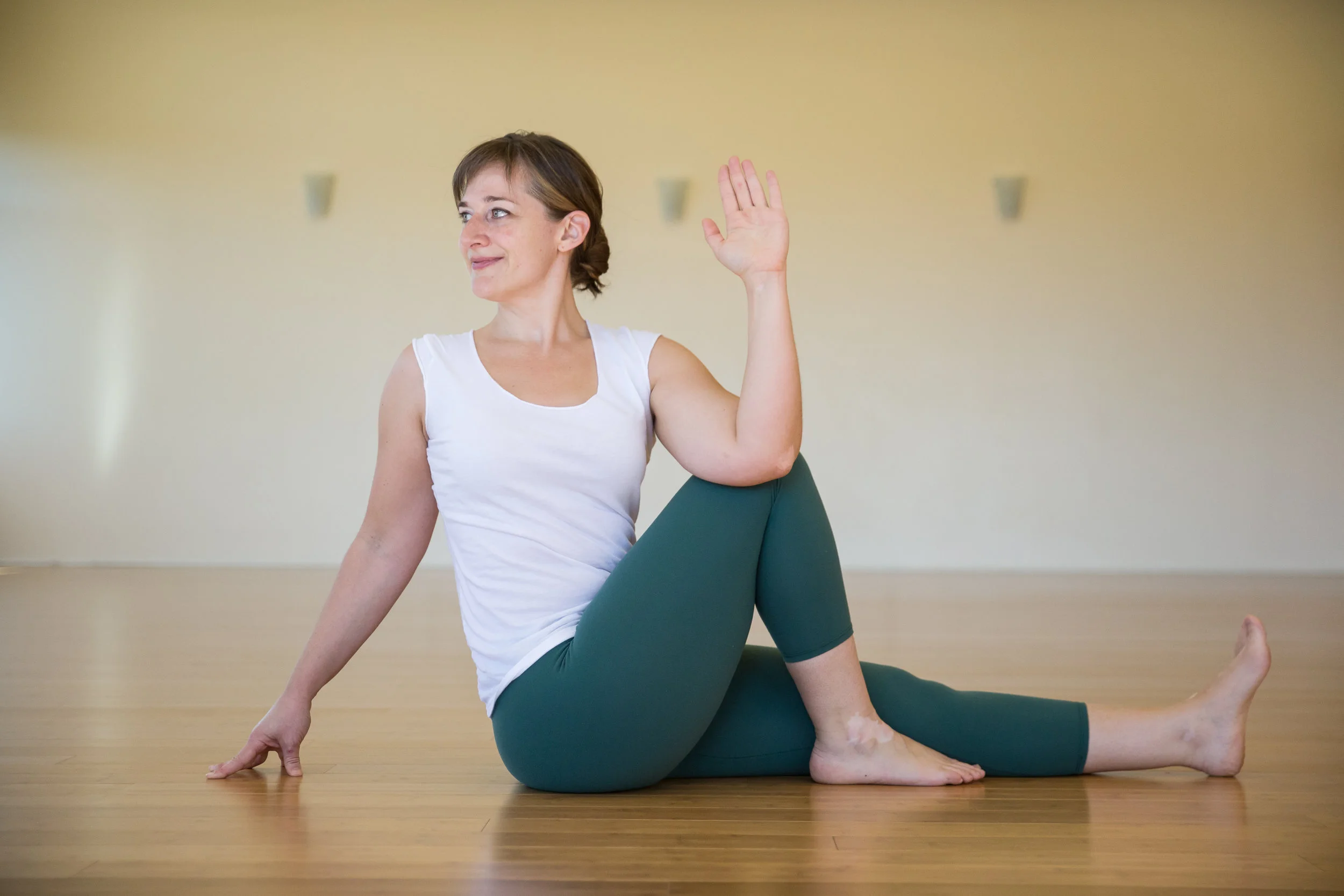Abhyasa and Vairagya: Effort and Letting Go
प्रयत्नशैथिल्यानन्तसमापत्तिभ्याम्
prayatnaśaithilyānantasamāpattibhyām — Yoga Sutra 2.47
“By relaxing effort and fixing the mind on the infinite [asana is perfected].”
Do you remember the last time you tried to do something new? Like a foreign language, a new instrument, or an unfamiliar yoga pose? Do you remember the amount of concentration and effort it required in the beginning?
Chances are, you didn’t ace it right away. You had to keep trying. Any amount of progress required practice. At some point, over time and consistent effort, whatever you were putting your energy into started getting a little easier. The more familiar it became, the less effort it required until it became second nature.
I see this a lot in yoga class. When I introduce an unfamiliar pose or when a new student comes to class, an extraordinary amount of effort is made to get the feet, legs, hips, shoulders, and arms working together. Muscles shake. The breath becomes short. The jaw clenches.
Eventually, as the pose becomes more familiar, we start to get a little more comfortable. While it still requires effort to stand on one leg or to balance on our forearms, we realize the pose can’t be done by forcing it. We start to soften and find ease, and are able to go deeper into the pose.
"Perfection in an asana is achieved when the effort to perform it becomes effortless and the infinite being within is reached."
-B. K. S. Iynegar
Abhyasa is the Sanskrit term for effort, practice, or work done consistently over time. This means showing up. Getting on your mat. Even if you’ve practiced Warrior I five hundred times, there is always something new to learn and effort to be made.
Vairagya is translated as non-attachment or letting go. This means being content with what is. Relaxing your eyes. Unclenching your jaw. Surrendering the will to force a particular outcome.
These may seem contradictory to each other.
The other day in class, one student remarked, "Do you want me to reach my arms up or down?" My reply was, "both at the same time." He said, "I don't understand. Those are opposites. How can I do two opposite things at the same time?"
Similarly, effort and letting go is done at the same time. When practicing a pose, try hard and soften into the pose. Be alert without tension. Without vairagya (letting go), we work our self to exhaustion. Without abhyasa (effort) we get lazy and complacent.
In his online course on the Yoga Sutras of Patanjali, Swami Jnaneshvara describes abhyasa and vairagya like a balance between “never give up!” and “always let go!”
We can practice abhyasa and vairagya off the mat as well.
As the Embodiment Center, formerly One Center Yoga, closes its doors on May 31, I find myself with the opportunity to practice letting go. When I heard the news, my first reaction was, “No! We can do more to keep the doors open. We can try harder!” I was not ready to leave the space that had been my yoga home for the past 8 years. I was resistant to change.
I began to settle into the fact that I can’t control the outcome no matter how much effort I put into it. I started to let go. I found ease knowing the yoga community we are a part of was not going away, just changing.
As I look forward to what’s next – teaching in a new space – I prepare myself for the effort to come. Outfitting the space. Stocking it with props. Getting the word out about the schedule. Putting in the work, without forcing it and always remembering to let go of my attachment to the outcome!
What are you holding on to? How can you let go? Where can you find ease?
Practice Letting Go
Marichyasana III (Marichy’s Twist)
Sit in Dandasana (Staff Pose) with your legs straight and your spine tall.
Bend your right knee and place your foot flat on the floor.
Interlock your fingers in front of your knee to lift the spine.
Extend your left arm overhead and turn your torso to the right towards your bent knee. Hold onto your knee with your arm or hook the elbow to the outside of your knee. Bring your right hand to the floor behind you.
Root the sit bones down. Extend out the crown of your head.
Bring the left ribs forward and the right ribs back.
Breathe.
Observe where you are gripping, hardening, making effort. Exhale and let go.
Relax your jaw. Soften your eyes. Hold for 5-7 breaths.
Repeat on the other side.
Twists are a great opportunity to practice letting go. We often use our arms to force the pose and become rigid and hardened with effort. Once we use our breath to let go of the effort, we easily deepen into the twist.
Savasana (Corpse Pose)
Lie on your back with your legs straight and your arms to your side with the palms up.
Completely relax your muscles.
Completely relax your mind.
Completely let go of any effort.
Lie there for 10 minutes.
At the end of every yoga asana practice, we lie in Corpse Pose. Quite literally, this pose is intended to imitate a corpse and to practice the ultimate in letting go – death. As you lie on your back, observe. Scan your body. Where are you creating effort. Practice letting it go.
References:
Swami Jnaneshvara, Traditional Yoga and Meditation of the Himalayan Masters, http://www.swamij.com/yoga-sutras-11216.htm
Richard Rosen, Balancing Effort and Surrender, https://www.yogajournal.com/yoga-101/balancing-effort-and-surrender

